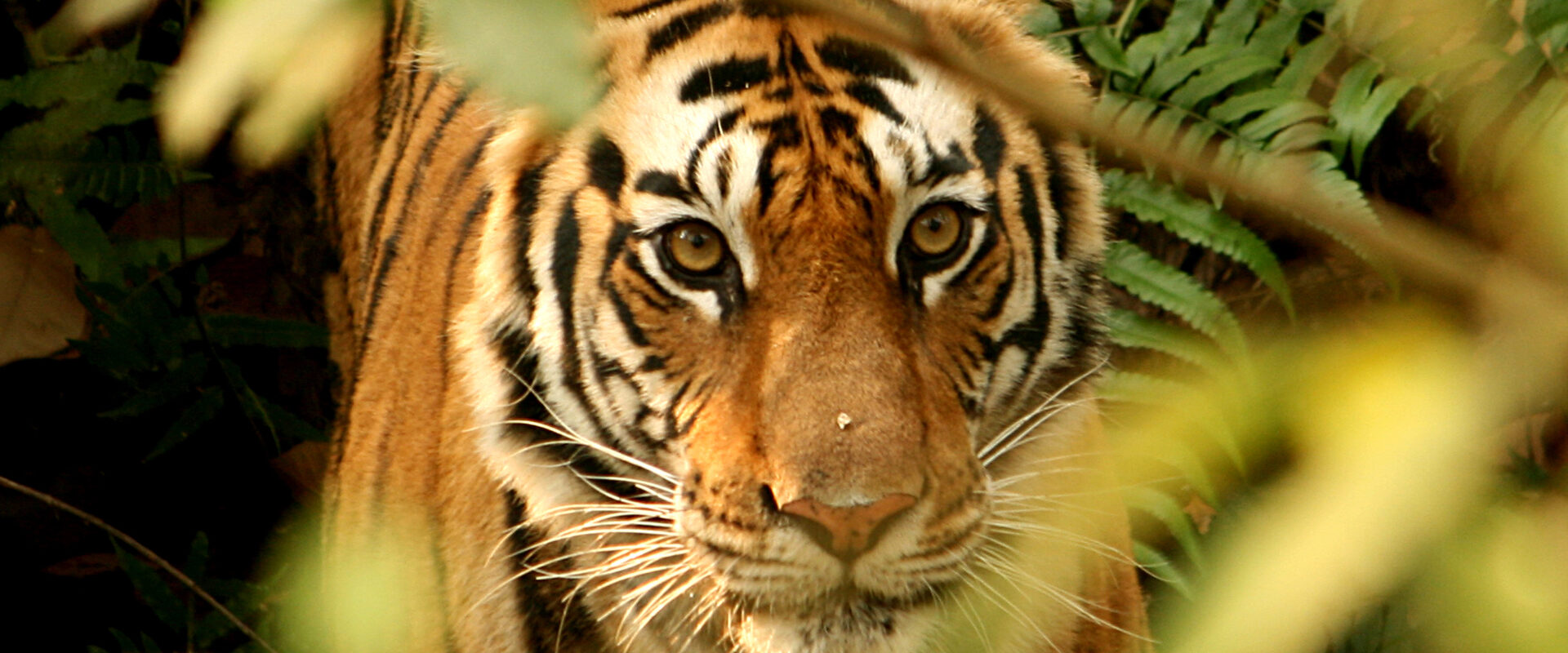
Chitwan National Park
Chitwan National Park is the first national park of Nepal. It was established in 1973 and was granted the status of a World Heritage Site in 1984. It covers an area of 952.63 km2 (367.81 sq mi) and it is located in the subtropical Inner Terai lowlands of south-central Nepal in the districts of Nawalpur, Parasi, Chitwan and Makwanpur. In altitude it ranges from about 100 m (330 ft) in the river valleys to 815 m (2,674 ft) in the Sivalik Hills.
In the north and west of the protected area the Narayani-Rapti river system forms a natural boundary to human settlements. Adjacent to the east of Chitwan National Park is Parsa National Park, contiguous in the south is the Indian Tiger Reserve Valmiki National Park. The coherent protected area of 2,075 km2 (801 sq mi) represents the Tiger Conservation Unit (TCU) Chitwan-Parsa-Valmiki, which covers a 3,549 km2 (1,370 sq mi) huge block of alluvial grasslands and subtropical moist deciduous forests.
Chitwan National Park is home to 68 mammal species. The “king of the jungle” is the Bengal tiger. The alluvial floodplain habitat of the Terai is one of the best tiger habitats anywhere in the world. Since the establishment of Chitwan National Park the initially small population of about 25 individuals increased to 70–110 in 1980. In some years this population has declined due to poaching and floods. In a long-term study carried out from 1995 to 2002 tiger researchers identified a relative abundance of 82 breeding tigers and a density of 6 females per 100 km2 (39 sq mi). Information obtained from camera traps in 2010 and 2011 indicated that tiger density ranged between 4.44 and 6.35 individuals per 100 km2 (39 sq mi). They offset their temporal activity patterns to be much less active during the day when human activity peaked.
Indian leopards are most prevalent on the peripheries of the park. They co-exist with tigers, but being socially subordinate are not common in prime tiger habitat. In 1988, a clouded leopard (Neofelis nebulosa)was captured and radio-collared outside the protected area. It was released into the park, but did not stay there.[15]
Chitwan is considered to have the highest population density of sloth bears with an estimated 200 to 250 individuals. Smooth-coated otters inhabit the numerous creeks and rivulets. Bengal foxes, spotted linsangs and honey badgers roam the jungle for prey. Striped hyenas prevail on the southern slopes of the Churia Hills. During a camera trapping survey in 2011, wild dogs were recorded in the southern and western parts of the park, as well as golden jackals, fishing cats, jungle cats, leopard cats, large and small Indian civets, Asian palm civets, crab-eating mongooses and yellow-throated martens.
Indian rhinoceros: since 1973 the population has recovered well and increased to 544 animals around the turn of the century. To ensure the survival of the endangered species in case of epidemics animals are translocated annually from Chitwan to the Bardia National Park and the Shuklaphanta National Park since 1986. However, the population has repeatedly been jeopardized by poaching: in 2002 alone, poachers killed 37 individuals in order to saw off and sell their valuable horns. Chitwan has the largest population of Indian rhinoceros in Nepal, estimated at 605 of 645 individuals in total in the country as of 2015. Gaurs spend most of the year in the less accessible Churia Hills in the south of the national park. But when the bush fires ease off in springtime and lush grasses start growing up again, they descend into the grassland and riverine forests to graze and browse. The Chitwan population of the world’s largest wild cattle species has increased from 188 to 368 animals in the years 1997 to 2016. Furthermore, 112 animals were counted in the adjacent Parsa Wildlife Reserve. The animals move freely between these parks. Apart from numerous wild boars also sambar deer, red muntjac, hog deer and herds of chital inhabit the park. Four-horned antelopes reside predominantly in the hills. Rhesus monkeys, grey langurs, Indian pangolins, Indian porcupines, several species of flying squirrels, Indian hares and endangered hispid hares are also present.
Every year dedicated bird watchers and conservationists survey bird species occurring all over the country. In 2006 they recorded 543 species in the Chitwan National Park, much more than in any other protected area in Nepal and about two-thirds of Nepal’s globally threatened species. Additionally, 20 black-chinned yuhina, a pair of Gould’s sunbird, a pair of blossom-headed parakeet and one slaty-breasted rail, an uncommon winter visitor, were sighted in spring 2008.
Especially the park’s alluvial grasslands are important habitats for the critically endangered Bengal florican, the vulnerable lesser adjutant, grey-crowned prinia, swamp francolin and several species of grass warblers. In 2005 more than 200 slender-billed babblers were sighted in three different grassland types. The near threatened Oriental darter is a resident breeder around the many lakes, where egrets, bitterns, storks and kingfishers also abound. The park is one of the few known breeding sites of the globally threatened spotted eagle.
Apart from the resident birds about 160 migrating and vagrant species arrive in Chitwan in autumn from northern latitudes to spend the winter here, among them the greater spotted eagle, eastern imperial eagle and Pallas’s fish-eagle. Common sightings include brahminy ducks and goosanders.
As soon as the winter visitors have left in spring, the summer visitors arrive from southern latitudes. The calls of cuckoos herald the start of spring. The colourful pitta and several sunbird species are common breeding visitors during monsoon.